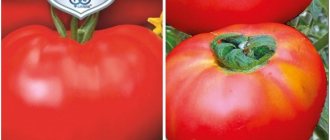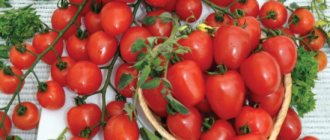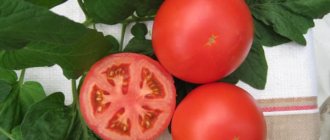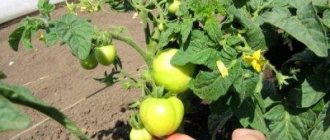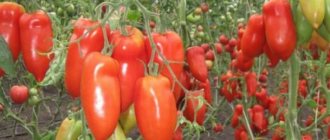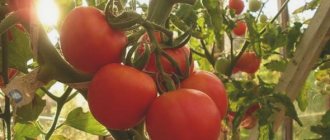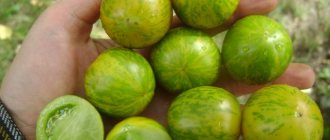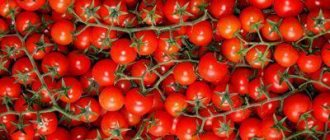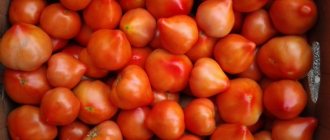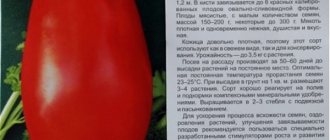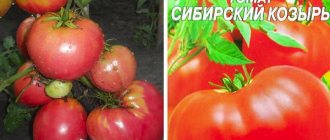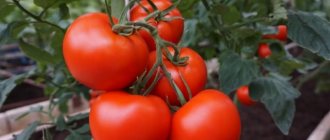Gardeners love the “Siberian Abundant” variety for its early ripe tomatoes. Grows well in a greenhouse. Tomatoes are tasty, sweet, with a thin skin. Ideal for pickling and pickling. They are not very fussy to grow and require the usual care: watering the soil and weeding away the grass.
This type of tomato was bred in Siberia; its self-explanatory name means that the plant has high productivity. It’s true: it’s enough to plant a few bushes of this variety of tomatoes and you can feed the whole family throughout the fall and winter.
Description of the variety
Tomatoes have a beautiful, neat shape with a rich red color. They have an average weight, one fruit weighs up to 200 grams. The variety is tall, the length of the bush reaches two meters. They are famous for their early and high harvest. When planted normally, tomatoes will ripen as early as July. One bush grows up to 5 kilograms of tomatoes. 5-6 branches are formed on the stem, each branch contains 8-10 tomatoes.
Tomatoes have a pleasant aroma and good taste: they are moderately sweet and juicy. The pulp with a lot of juice contains almost no seeds. The skin is hard, it protects the fruit from cracks and damage. That is why the Siberian Abundant variety is well suited for pickles and preparations.
The variety is preferably grown in a greenhouse to achieve better results. However, it is noted that in the southern regions of the country, where summer comes early, tomatoes also grow well. For the central part of Russia, it is better to plant in a greenhouse or greenhouse.
Characteristics of the tomato Sugar plum raspberry and cultivation of the variety
The Sugar Plum Raspberry tomato is popular among vegetable growers due to its excellent taste and rich raspberry color. Among the variety of varieties with consonant names is the beef tomato Raspberry Sugar, the main advantages of which are its vitamin and mineral composition.
Advantages of the variety
The Sugar Plum Raspberry tomato is intended for cultivation in closed ground conditions. The early ripening variety begins to bear fruit 87-95 days after the sprouts appear. The semi-determinate plant reaches a height of 120-140 cm.
During the growth process, it requires moderate removal of shoots and tying to trellises or supports. At the ripe stage, the fruits acquire an intense crimson color. Tomatoes with elastic skin, elongated shape, resemble plums in appearance.
Tomatoes with fleshy pulp, which contains a high concentration of sugars and vitamins. When cut horizontally, small chambers with seeds are observed. The fruit weight reaches 20-25 g. The variety is distinguished by abundant fruiting, technological qualities, and transportability.
The yield per 1 m² reaches 7-8 kg. Reviews from vegetable growers indicate the main value of the variety, which is its abundant fruiting. Tomatoes are used fresh as an ingredient in various dishes. When canned, the fruits retain their shape.
A variety with a similar name
The exquisite beef tomato Sugar Raspberry is intended for cultivation in closed ground. A medium-late ripening variety begins to bear fruit 115-120 days after germination.
The indeterminate plant reaches a height of 120-150 cm during the growing season. The bushes require selective removal of stepsons and tying to a support. When planting in a permanent place, maintain a distance of 30-40 cm between the bushes.
The variety is resistant to diseases and high temperatures, and has a long fruiting period. Up to 5 tomatoes weighing 150-180 g are formed and ripened in a cluster. The yield of the variety reaches 8-10 kg per 1 m². The peak of fruit ripening occurs in August, although the first tomatoes can be picked from the bush in July.
Sugar vitamin tomatoes are flat, round in shape, with a glossy surface, fleshy pulp, sweet in taste, with a pronounced tomato aroma. At the ripe stage they acquire a crimson color. Tomatoes are recommended for fresh consumption; they are processed into juice and paste.
Agricultural cultivation technology
Sowing seeds for seedlings is carried out in the second ten days of March. To do this, seeds are placed in containers with prepared soil to a depth of 1 cm. After moderate watering with warm water using a sprayer, the container is covered with film until the sprouts hatch.
In the process of growing crops in seedlings, it is necessary to carefully monitor the temperature, air and soil humidity. For normal development of seedlings, good lighting must be provided.
You can extend daylight hours using fluorescent lamps. Any deviations from growing technology negatively affect the quality of planting material.
In the phase of formation of 1-2 true leaves, a dive is carried out. For this purpose, it is recommended to use peat pots filled with substrate, with which you can transfer the seedlings to a permanent place.
By mid-May, 6-7 leaves are formed on the bushes. Seedlings on which 1 peduncle has formed are transferred to the ground. A week before planting, the plants are hardened by changing the temperature. To do this, the seedlings are taken outside, gradually increasing the exposure time from 30 minutes to several hours.
It is recommended to grow semi-determinate bushes with 2-3 stems. When removing shoots, 2 shoots are left in stock. After the growth of the main stem stops, the stepsons continue to grow and an ovary forms on them.
During the growing season, compact bushes form. With a good garter, 8-9 seedlings can be placed per 1 m². The variety is demanding on soil composition. To ensure a high yield, it is necessary to periodically fertilize with mineral fertilizers according to the manufacturer’s scheme.
To ensure uniform watering and prevent weed growth, the soil is mulched using special fiber. Using grass, straw, and leaves as mulch enriches the soil with the nutrients necessary for tomato growth.
Growing
The variety is grown from seeds. Seeds are planted in the spring, 60 days before transplanting into the greenhouse. To eliminate infection, seeds and soil are disinfected. Dilute a weak solution of soda or permanganate and soak the seeds in it for half an hour; after soaking, the seeds are washed with plain clean water. Place the soil in a microwave oven and turn it on for 2-3 minutes at a power of up to 800 W; you can also sprinkle the soil with soda or potassium permanganate.
Now you can plant the seeds. Make grooves in the ground 2 centimeters deep, place a seed there and retreat 3 centimeters to the next one. Plant the entire bag in this way. Tomatoes love warmth; the optimal temperature for growing them is 24-23 degrees. Light also stimulates the growth of tomatoes. Tomatoes need 12-14 hours of light. It is better to install a source of additional lighting. It is important to remember that early sowing does not mean early harvest. An early harvest is achieved by fulfilling all conditions: watering, fertilizing, transplanting seedlings, lighting and temperature.
Plants do not tolerate crowding, so when the time comes, they need to be planted in separate containers. For additional nutrition, add soil to the container once a week. This is good for the plant. It is necessary to constantly moisten the soil and water it as it dries. If the humidity at home is low, then the tomato leaves need to be sprayed.
Tomatoes are planted in the greenhouse in late April - early May. The soil needs to be fertilized: add humus, peat or sawdust at the rate of one bucket per square meter. Dig up the ground and level it. Mark the proposed landing sites. Directly during planting, a weak solution of potassium permanganate is poured into the ground for disinfection. A stem 25-30 centimeters long is placed in the hole and only the roots are buried. You should not sprinkle the stem, as this will stop the growth of the plant. Water the planted seedlings only after a week to avoid stretching the stem.
The “Siberian Abundant” variety has a tall stem that must be tied up. A wire should be stretched in the greenhouse, twine should be tied to it, and a tomato stem should be tied to the other end of the twine. The variety tends to produce stepsons; they are broken off or cut off. This should be done in the first half of the day, when the plant is full of energy, and this procedure does not seriously injure it. The wound will dry up on its own.
You may be interested in: Dates for planting tomato seedlings in open ground and greenhouses according to the garden calendar Favorable days for planting tomatoes for seedlings in 2021 according to the lunar sowing calendar Favorable days for picking tomatoes in 2021 after germination: timing of picking tomato seedlings in the table by day
To set fruit, tomatoes need to be pollinated. Pollination is carried out as follows: in the morning or afternoon, come to the greenhouse and shake the bush, where there are already flowers with pollen. This must be done carefully, without harming the tomatoes. Afterwards, spray the leaves and spill the soil. To prevent moisture from stagnating in the soil, the greenhouse should be well ventilated. At least once a day, as the temperature rises, you need to open the windows or door. Humidity decreases.
Watering before flowering begins should be moderate, once every five days. As soon as the tomatoes bloom, you need to double the amount of water. Fertilizers must be handled with care; they can seriously damage the root system of the plant. Fertilizers use active organic substances; they can influence both the growth and the taste and color of future tomatoes. Phosphate fertilizers for tomatoes are praised; they have a positive effect on tomatoes and accelerate their ripening. It is better to use fertilizer no more than once every three weeks.
Hothouse
“Siberian Abundant” will delight you with ripe fruits already in July. Tomatoes will ripen right on the bush until late autumn.
Tomatoes of Siberian selection for open ground
The best representatives grown in open ground from seeds include:
- Heavyweight of Siberia;
- Siberian Malachite;
- Siberian surprise;
- Date Siberian F1;
- Siberian apple.
Heavyweight of Siberia
Tomato for use in open ground from seeds can be called the best productive determinate variety of Siberian selection. It is characterized by early ripening. However, not only does it require a small garter, but also vegetables, which, due to their large mass, can be torn from the stalk. The weight of one tomato is 400–600 g. They clearly have a heart-shaped shape. The skin is dense and smooth. When fully ripe, tomatoes are red in color.
Important! The heavyweight of Siberia does not tolerate high temperatures.
Siberian Malachite
Representative of productive selection of late-ripening tomatoes from seeds. It begins to bear fruit when the main tomato crop has already been harvested. Tall, depending on growing conditions, reaching 2 m in height. It requires tying and pinching. They have an unusual yellow-green color. The skin is dense. Weight 100–130 g. Green flesh.
Siberian surprise
This variety of tomatoes is one of the productive new products of Siberian selection from seeds. Subspecies of mid-early ripening, multiple births. Characterized by good fruit set. Up to 10 tomatoes are formed on 1 brush. The bush is leafy, up to 120 cm high. It needs regular pinching. Tomatoes are shaped like peppers; they are elongated and elongated. Weight 130 g. Optimally suitable for whole-fruit canning.
Date Siberian F1
A hybrid variety of Siberian selection of productive yellow tomatoes. Is mid-season. Height varies from 0.9–1.5 m. The number of lateral sprouts is moderate. Doesn't need pinching. The fruiting period of the hybrid begins in July and lasts until September. The tomatoes are small, elongated in shape, with a sharp end. Weight is 20–30 g. They are easily transported and do not deteriorate for a long time.
Siberian apple
The tomato belongs to the mid-early variety. The bushes are tall, up to 185–190 cm high. The tomatoes are dense, fleshy, bright pink in color. The yield from seeds is consistently high. The taste is sweet. The pulp has a high sugar content. They note high commercial quality and long shelf life. It is recommended to plant no more than three bushes per 1 square meter. m.
Reviews from gardeners
Most people have only good words about this variety.
Maria from the Moscow region said: “I planted it last year, the seedlings all took off well. The bushes grew two meters tall, the bush was full of ovaries, and the harvest exceeded all expectations. There were a lot of tomatoes, we even had to distribute them to neighbors and treat colleagues. They taste good, but I used them more for salting. This year I will definitely plant, but less.”
Olga from Omsk says: “An excellent variety of tomatoes! It’s not fussy at all, I didn’t fertilize the soil much, but it didn’t affect the tomatoes at all. On the contrary, they bloomed early, and the tomatoes themselves began to gain color at the beginning of summer. I made a vegetable stew from the fruits, added them to lecho, salted them, pickled them, and even froze some of them. By the way, they freeze well due to their thick skin and do not tear or burst. I really like the variety, I will definitely continue to grow it.”
Care
Timely true care is important. All bushes need scheduled feeding. Humus is added to the soil, but not fresh, but settled or last year’s, so as not to heat the root system and destroy the seedlings. You can distribute manure in the following proportions: 2 kg of the substance, get 8 liters of water and leave for at least a week. This fertilizer can be fed to plants every 2 weeks.
Every week you should remove weeds, loosen the soil and build a small mound near the stem. In this way, the plant forms new origins and has more access to fertilizers and watering. The soil should be moistened under the stem, without getting on the leaves. After irrigation, there is no need to loosen the soil or even sprinkle it dry so that a crust does not form.
Diseases
The described tomato variety is characterized by high immunity to fusarium, late blight and blossom end rot. This is an early cold-resistant variety, and therefore the fruits ripen quickly - the plant does not have time to get sick.
The plant also has high immunity to various insects, so insecticidal preparations are rarely used.
Prevention
It is not for nothing that gardeners choose Dacha tomatoes, because they do not require the preventive application of insecticidal preparations.
Tomato Summer resident (The best varieties of tomatoes)
Summer resident
Variety – “SUMMER RESIDENT”. Tomatoes from Fyodor.
The hybrid often suffers from whitefly attacks.
How to grow Abundant?
Every summer resident wants to eat a delicious tomato from his own garden. The instructions on the seed packet promise an abundance of tomatoes if you follow the growing rules. Feature of the hybrid: rapid ripening. When leaving, you need to take this fact into account.
Agronomists advise:
- drive out seedlings 35 days before the intended planting;
- containers should be disinfected (rinse with alcohol, pink solution of potassium permanganate);
- prepare light fertile soil (make it yourself or buy it);
- plant seeds to a depth of 1.5 cm;
- Maintain a temperature of 23–25 degrees Celsius until germination;
- reduce the temperature after pipping to 18 degrees Celsius;
- hardening, ventilation, and lighting are required;
- dive deep with two true leaves;
- to strengthen the bush when planting, use calcium nitrate (a tablespoon for each plant);
- The planting site must be prepared in advance (loosen, add the mineral complex nitrogen-potassium-phosphorus);
- plant in a permanent place after returning cold weather;
- choose a sunny place;
- for the first 2 days, shade the plantings from the sun with white non-woven material;
- It is recommended to tie up plants;
- stepsoning required;
- plant 5–7 plants/m² of area;
- layout: 40 cm X 50 cm;
- Do not over-moisten the soil under the bushes.
You should remember about “dry watering” - loosening: the crust is destroyed, gas exchange improves.
